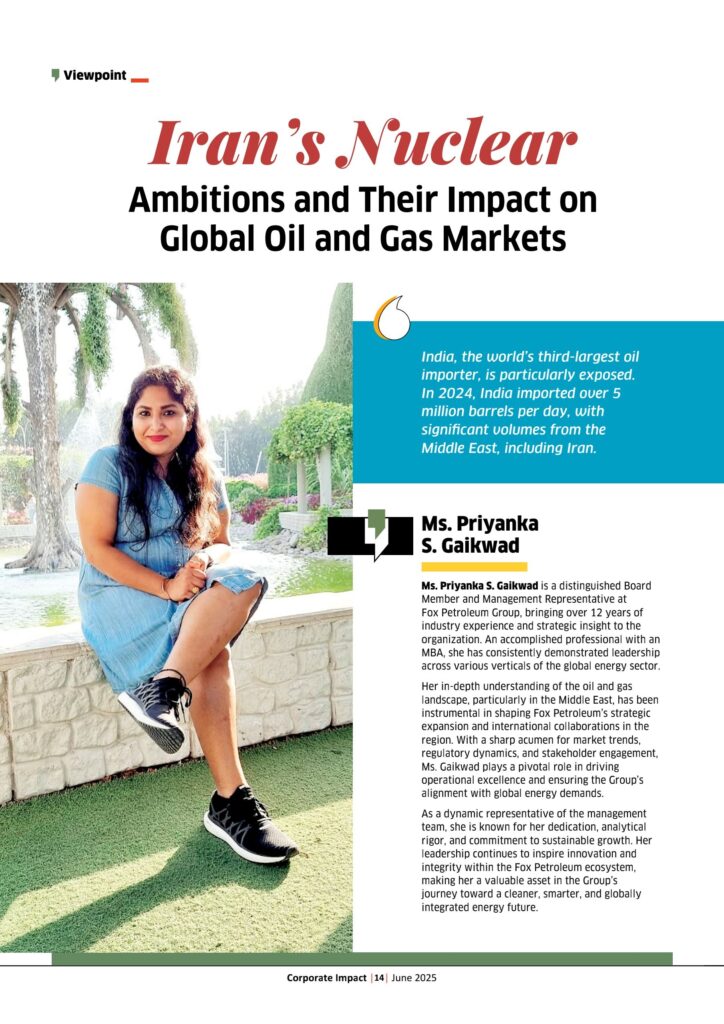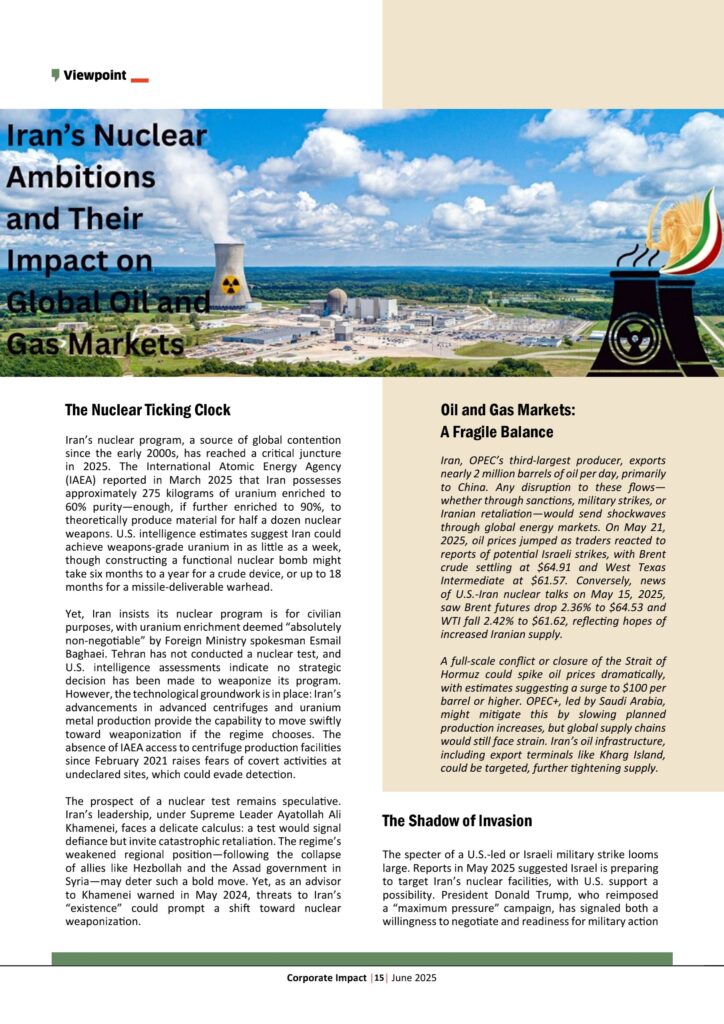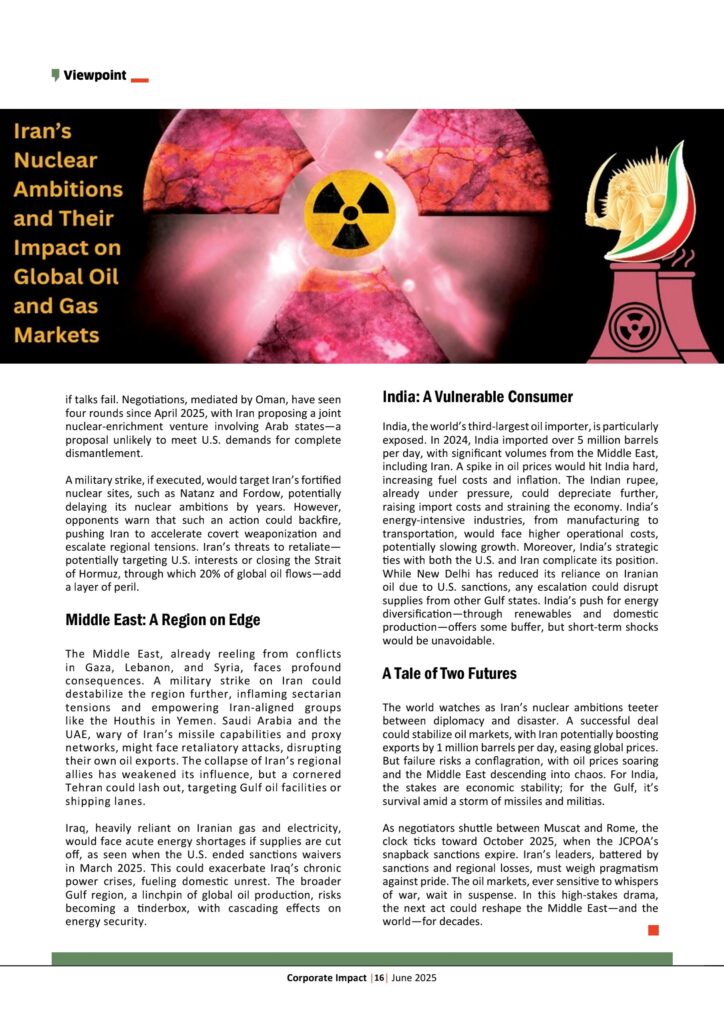India, the world’s third-largest oil importer, is particularly exposed. In 2024, India imported over 5 million barrels per day, with significant volumes from the Middle East, including Iran.
Ms. Priyanka S. Gaikwad
Ms. Priyanka S. Gaikwad is a distinguished Board Member and Management Representative at Fox Petroleum Group, bringing over 12 years of industry experience and strategic insight to the organization. An accomplished professional with an MBA, she has consistently demonstrated leadership across various verticals of the global energy sector.
Her in-depth understanding of the oil and gas landscape, particularly in the Middle East, has been instrumental in shaping Fox Petroleum’s strategic expansion and international collaborations in the region. With a sharp acumen for market trends, regulatory dynamics, and stakeholder engagement, Ms. Gaikwad plays a pivotal role in driving operational excellence and ensuring the Group’s alignment with global energy demands.
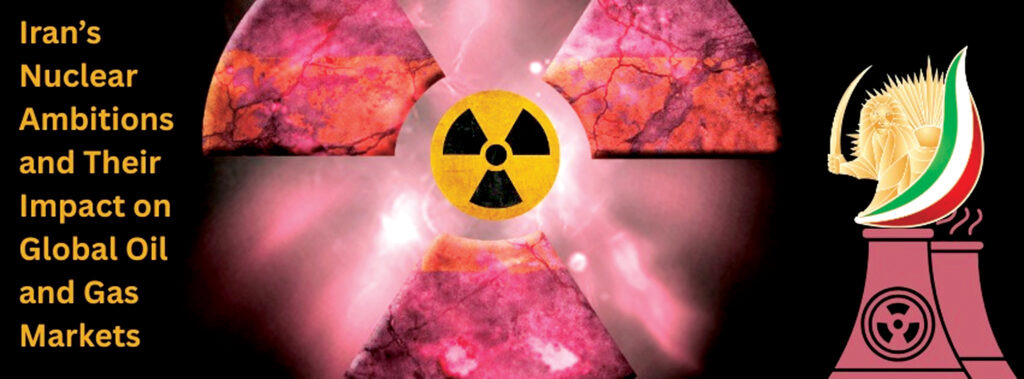
As a dynamic representative of the management team, she is known for her dedication, analytical rigor, and commitment to sustainable growth. Her leadership continues to inspire innovation and integrity within the Fox Petroleum ecosystem, making her a valuable asset in the Group’s
journey toward a cleaner, smarter, and globally integrated energy future.
The Nuclear Ticking Clock
Iran’s nuclear program, a source of global contention since the early 2000s, has reached a critical juncture in 2025. The International Atomic Energy Agency (IAEA) reported in March 2025 that Iran possesses approximately 275 kilograms of uranium enriched to 60% purity—enough, if further enriched to 90%, to theoretically produce material for half a dozen nuclear weapons. U.S. intelligence estimates suggest Iran could achieve weapons-grade uranium in as little as a week, though constructing a functional nuclear bomb might take six months to a year for a crude device, or up to 18 months for a missile-deliverable warhead.
Yet, Iran insists its nuclear program is for civilian purposes, with uranium enrichment deemed “absolutely non-negotiable” by Foreign Ministry spokesman Esmail Baghaei. Tehran has not conducted a nuclear test, and U.S. intelligence assessments indicate no strategic decision has been made to weaponize its program. However, the technological groundwork is in place: Iran’s advancements in advanced centrifuges and uranium metal production provide the capability to move swiftly toward weaponization if the regime chooses. The absence of IAEA access to centrifuge production facilities since February 2021 raises fears of covert activities at undeclared sites, which could evade detection.

The prospect of a nuclear test remains speculative. Iran’s leadership, under Supreme Leader Ayatollah Ali Khamenei, faces a delicate calculus: a test would signal defiance but invite catastrophic retaliation. The regime’s weakened regional position—following the collapse of allies like Hezbollah and the Assad government in Syria—may deter such a bold move. Yet, as an advisor to Khamenei warned in May 2024, threats to Iran’s “existence” could prompt a shift toward nuclear weaponization.
Oil and Gas Markets:
A Fragile Balance
Iran, OPEC’s third-largest producer, exports nearly 2 million barrels of oil per day, primarily to China. Any disruption to these flows—whether through sanctions, military strikes, or Iranian retaliation—would send shockwaves through global energy markets. On May 21, 2025, oil prices jumped as traders reacted to reports of potential Israeli strikes, with Brent crude settling at $64.91 and West Texas Intermediate at $61.57. Conversely, news of U.S.-Iran nuclear talks on May 15, 2025, saw Brent futures drop 2.36% to $64.53 and WTI fall 2.42% to $61.62, reflecting hopes of increased Iranian supply.
A full-scale conflict or closure of the Strait of Hormuz could spike oil prices dramatically, with estimates suggesting a surge to $100 per barrel or higher. OPEC+, led by Saudi Arabia, might mitigate this by slowing planned production increases, but global supply chains would still face strain. Iran’s oil infrastructure, including export terminals like Kharg Island, could be targeted, further tightening supply.
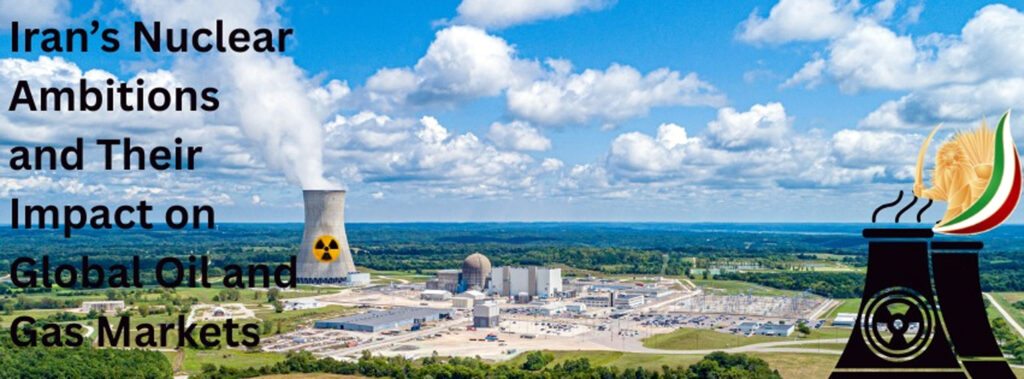
The Shadow of Invasion
The specter of a U.S.-led or Israeli military strike looms large. Reports in May 2025 suggested Israel is preparing to target Iran’s nuclear facilities, with U.S. support a possibility. President Donald Trump, who reimposed a “maximum pressure” campaign, has signaled both a willingness to negotiate and readiness for military action if talks fail. Negotiations, mediated by Oman, have seen four rounds since April 2025, with Iran proposing a joint nuclear-enrichment venture involving Arab states—a proposal unlikely to meet U.S. demands for complete dismantlement.
A military strike, if executed, would target Iran’s fortified nuclear sites, such as Natanz and Fordow, potentially delaying its nuclear ambitions by years. However, opponents warn that such an action could backfire, pushing Iran to accelerate covert weaponization and escalate regional tensions. Iran’s threats to retaliate—potentially targeting U.S. interests or closing the Strait of Hormuz, through which 20% of global oil flows—add a layer of peril.
Middle East: A Region on Edge
The Middle East, already reeling from conflicts in Gaza, Lebanon, and Syria, faces profound consequences. A military strike on Iran could destabilize the region further, inflaming sectarian tensions and empowering Iran-aligned groups like the Houthis in Yemen. Saudi Arabia and the UAE, wary of Iran’s missile capabilities and proxy networks, might face retaliatory attacks, disrupting their own oil exports. The collapse of Iran’s regional allies has weakened its influence, but a cornered Tehran could lash out, targeting Gulf oil facilities or shipping lanes.
Iraq, heavily reliant on Iranian gas and electricity, would face acute energy shortages if supplies are cut off, as seen when the U.S. ended sanctions waivers in March 2025. This could exacerbate Iraq’s chronic power crises, fueling domestic unrest. The broader Gulf region, a linchpin of global oil production, risks becoming a tinderbox, with cascading effects on energy security.
India: A Vulnerable Consumer
India, the world’s third-largest oil importer, is particularly exposed. In 2024, India imported over 5 million barrels per day, with significant volumes from the Middle East, including Iran. A spike in oil prices would hit India hard, increasing fuel costs and inflation. The Indian rupee, already under pressure, could depreciate further, raising import costs and straining the economy. India’s energy-intensive industries, from manufacturing to transportation, would face higher operational costs, potentially slowing growth. Moreover, India’s strategic ties with both the U.S. and Iran complicate its position. While New Delhi has reduced its reliance on Iranian oil due to U.S. sanctions, any escalation could disrupt supplies from other Gulf states. India’s push for energy diversification—through renewables and domestic production—offers some buffer, but short-term shocks would be unavoidable.
A Tale of Two Futures
The world watches as Iran’s nuclear ambitions teeter between diplomacy and disaster. A successful deal could stabilize oil markets, with Iran potentially boosting exports by 1 million barrels per day, easing global prices. But failure risks a conflagration, with oil prices soaring and the Middle East descending into chaos. For India, the stakes are economic stability; for the Gulf, it’s survival amid a storm of missiles and militias.
As negotiators shuttle between Muscat and Rome, the clock ticks toward October 2025, when the JCPOA’s snapback sanctions expire. Iran’s leaders, battered by sanctions and regional losses, must weigh pragmatism against pride. The oil markets, ever sensitive to whispers of war, wait in suspense. In this high-stakes drama, the next act could reshape the Middle East—and the world—for decades.
